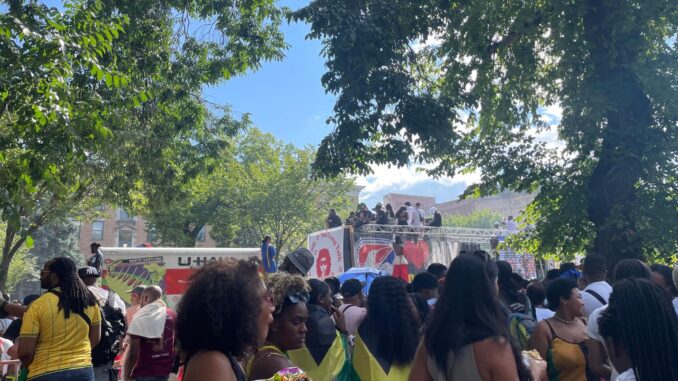
BY: AMIRA TURNER
On September 2nd, 2024, thousands of New Yorkers flooded the streets of Brooklyn, from Eastern Parkway to Grand Army Plaza, with an array of rhythmic music, Caribbean spices, tropical drinks, and elaborate costumes to celebrate the West Indian Day Parade. While the parade is an annual tradition, this year, the parade holds new significance for the West Indian community, with Democratic presidential candidate Kamala Harris making history as America’s first Jamaican American presidential candidate.

Parade-goers took to the streets of Crown Heights, proudly touting flags from their home countries, from Barbados, Jamaica, Trinidad, and beyond. But does their sense of community pride translate to political support for Harris’s campaign?
Local Democrats hosted a pre-parade breakfast to deliver speeches, and rally support for the Harris campaign. New York Attorney General Letitia James and Brooklyn Assemblywoman Latrice Walker were among those in attendance.
According to The New York Daily News, James told attendees to, “walk down Eastern Parkway…in honor of the next President of these United States: Kamala Harris,” as well as advocating for voter participation in Brooklyn’s large West Indian population.
Brooklyn Heights residents Wisdom Huggins and Emoni Ramirez danced through the parade, clad in black, yellow, and green, the colors of the Jamaican flag. For Huggins, Harris’s campaign is fully in tune with the spirit of West Indian pride. “I’m ecstatic. Representation for us, for our daughters, for the next generation, it means everything,” Huggins said.
Ramirez echoed Huggins’ sentiment of hope, with a grain of salt, “My thing is, you can say what you’re going to do up there on that podium, and then when you’re elected, things change,” Ramirez said. “She’s creating a lot of firsts, she’s going to have to stand tall.”
Other West Indian Americans, like Ski Henry, represent a sense of historical mistrust towards politicians and political apathy in the community. “A lot of people have very mixed emotions about politics, it’s a lot to dig into,” Henry said. Despite her lack of enthusiasm about the American political system, Henry was proud to represent Jamacia, donning a Jamaican flag tee and green and yellow jewelry, sharing that, for her, Jamaican pride “runs through your blood.”
While most parade attendees chose to represent their home countries, Labeebah Burrell, chose to dress entirely in red, white, and blue stars and stripes, choosing to celebrate the American side of her Caribbean American identity. “For me, it just shows how far this country has come, especially with our ancestors, the people who were here, the slaves that were here.” Burrell continued, “and have America as a part of their culture.”
For Burrell, Harris’ potential candidacy falls in line with her patriotism. As for members of her community who lack her enthusiasm about the upcoming election, Burrell has one piece of advice: “Sometimes they kind of like to stick to the old school ways, but as long as they stay open-minded, branch out, I don’t think we’re going to have any problems.”
Though Harris was not in attendance, the West Indian Day Parade represents a significant part of the candidate’s heritage and celebrates an important voter bloc the Harris campaign hopes to mobilize come November.
